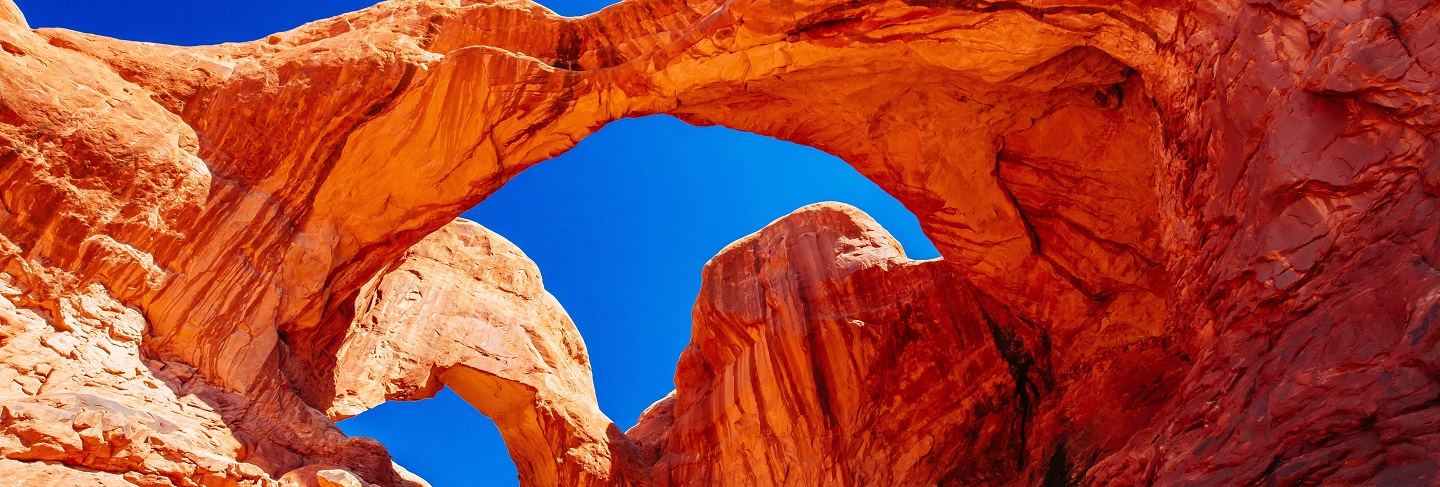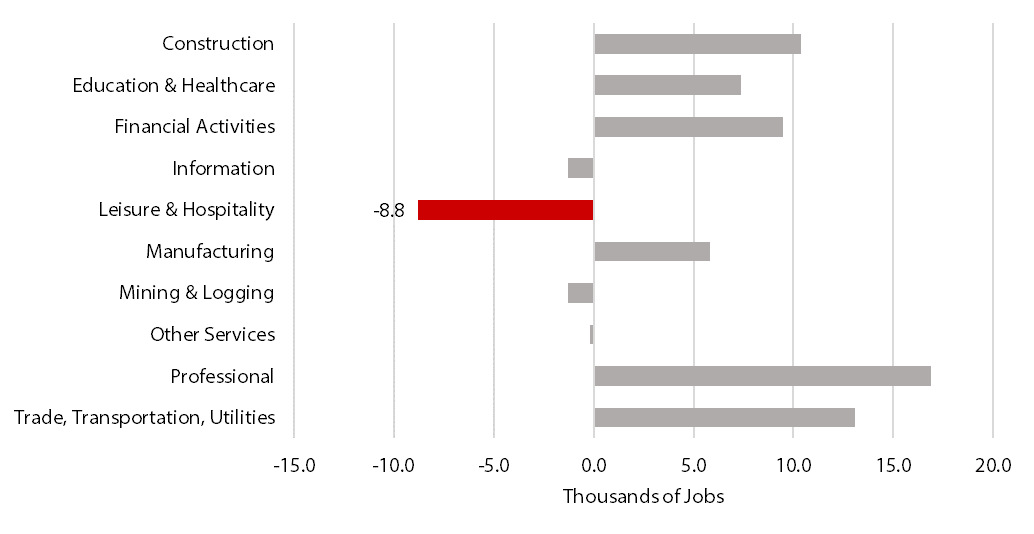Blog Post
Insight: Summer 2021 in Utah: Tourism Up, Staffing Down
By: Jennifer Leaver
Note: The opinions expressed are those of the author alone and do not reflect an institutional position of the Gardner Institute. We hope the opinions shared contribute to the marketplace of ideas and help people as they formulate their own INFORMED DECISIONS™.
Jul 1, 2021 – Long lines at the coffee shop, lengthy waits for a server, frenzied hotel clerks, and the phrase, “Sorry, we’re short-staffed today.” Sound familiar?
As the summer travel season in Utah continues to heat up, gaps in leisure and hospitality employment exist across the state. Based on the most recent U.S. Bureau of Labor Statistics data, Utah’s leisure and hospitality sector was down 8,800 jobs this May compared with two years ago; an employment deficit greater than in any other major Utah industry (see Figure 1).
Figure 1: Utah Job Change by Industry, May 2021 vs. May 2019
Source: Kem C. Gardner Policy Institute analysis of U.S. Bureau of Labor Statistics data
Regionally, the largest hospitality job deficit exists along the Wasatch Front. In fact, Salt Lake City hospitality jobs were down nearly 10% this May, with both the accommodations and foodservice sectors down 2,200 jobs each. Conversely, the St. George area experienced a 5.9% increase in leisure and hospitality employment last month compared with 2019—a good thing considering Zion National Park welcomed an additional 80,000 visitors in May alone (see Figure 2). Still, it’s hard to say if this job increase has kept pace with the significant increases in park visitation in the St. George area.
Figure 2: Leisure and Hospitality Employment Change by Metropolitan Statistical Area,
May 2021 vs. May 2019
Note: Salt Lake City Metropolitan Statistical Area includes Salt Lake and Tooele counties; Ogden-Clearfield includes Box Elder, Davis, Morgan, and Weber counties; Provo-Orem includes Juab and Utah counties; and St. George includes Washington County.
Source: Kem C. Gardner Policy Institute analysis of U.S. Bureau of Labor Statistics data
Lately, there have been several media mentions about short-staffed restaurants in Utah. Foodservice employment data shows that the Ogden-Clearfield area has fared the best, with current restaurant jobs finally inching above 2019 levels. Salt Lake City and Provo-Orem’s restaurant jobs, however, were still down 3%–5% from baseline this May (see Figure 3). For context, statewide restaurant sales were up 20% this April compared with 2019.
Figure 3: Foodservice Employment Change by Metropolitan Statistical Area,
May 2021 vs. May 2019
Note: Salt Lake City Metropolitan Statistical Area includes Salt Lake and Tooele counties; Ogden-Clearfield includes Box Elder, Davis, Morgan, and Weber counties; and Provo-Orem includes Juab and Utah counties.
Source: Kem C. Gardner Policy Institute analysis of U.S. Bureau of Labor Statistics data
So, where are the workers and why aren’t they snatching up the available jobs?
Economists describe several reasons for this lasting hospitality employment deficit. As the hardest-hit sector in 2020, the tourism industry suffered the greatest number of layoffs compared with other major industries. Many furloughed employees were able to collect generous unemployment checks during the pandemic—benefits that did not expire until a few days ago (June 26, 2021). In addition, some hospitality employees left the workforce during the pandemic to care for family members; or, if still unvaccinated, have feared returning to the social nature of hospitality work. Other former leisure and hospitality employees have opted for a career change altogether.
However, as supplemental unemployment benefits expire, vaccination rates continue to rise, and life as we know it regains some normalcy, it is expected that the leisure and hospitality job gap will narrow and tourism-related services improve. To quote Guns N’ Roses, “all we need is just a little patience.”
Jennifer Leaver is the senior tourism analyst at the Kem C. Gardner Policy Institute.









